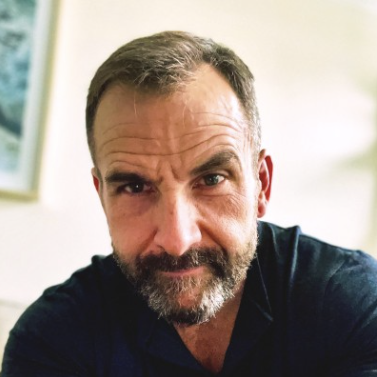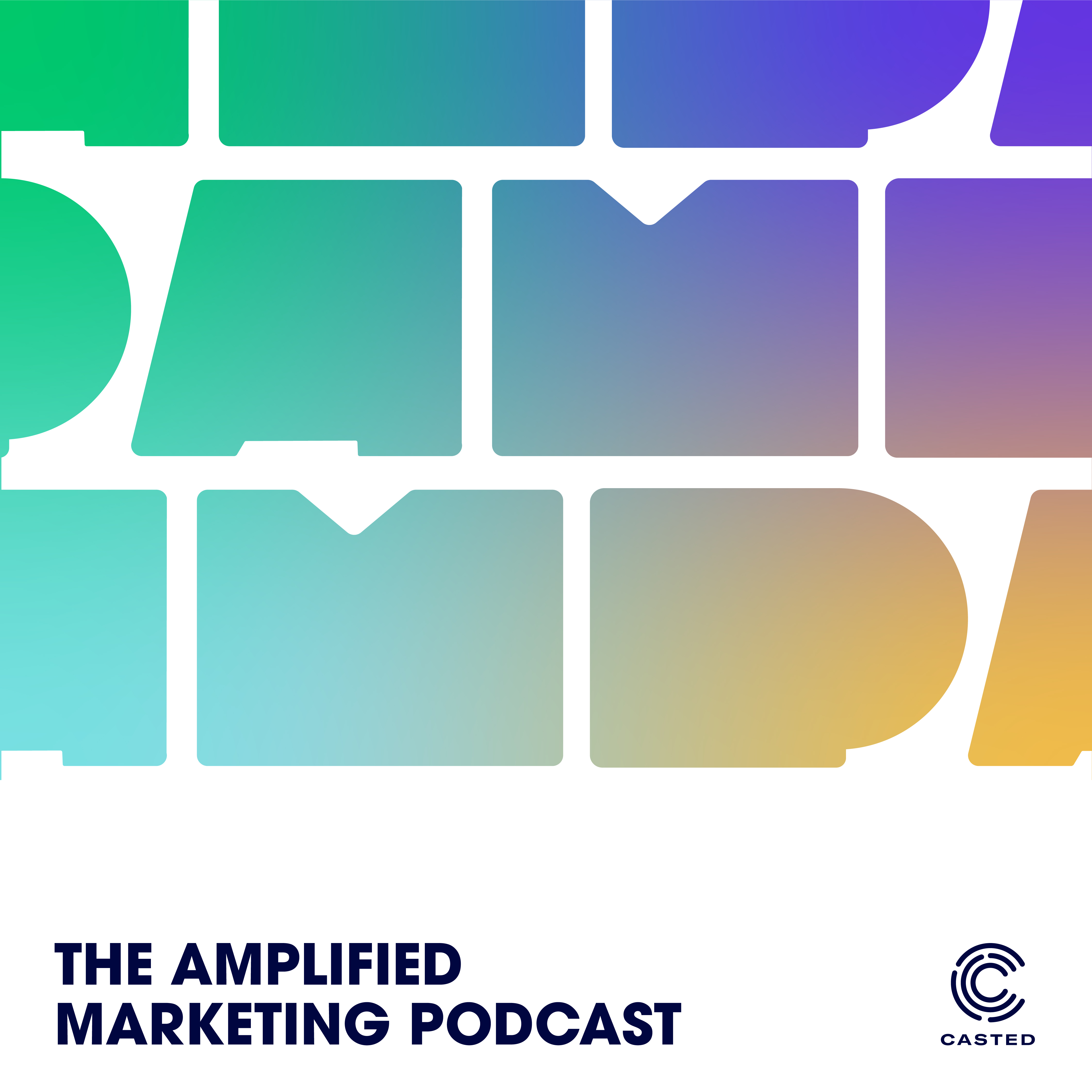How B2B Podcasts Grow Up: Grow Your Audience, Grow Your Brand
- 0.5
- 1
- 1.25
- 1.5
- 1.75
- 2
Lindsay Tjepkema: Your show's audience growth equals brand growth There, that's it, that's the episode. We're done. That's also your math lesson for the day, okay, I'm kidding. There's a lot more to unpack here, but it is the crux of being in stage three of the B2B podcast maturity curve. The more your show audience grows, the more your brand grows and the more your brand grows, well, I'm talking to marketers, you don't need me to explain it to you. Brand affects every facet of your organization inside and out. In this episode, we're diving into audience growth, how to achieve it, how to refine it, how to keep setting those SMART goals because if you think way back to our first couple of episodes in this series, and if you don't remember, go back and listen to them, we know that downloads aren't everything, but audience, now that begins to really be something. I'm Lindsay Tjepkema, a lifelong marketer and proud CEO and co- founder of Casted, the B2B marketing platform for brand podcasters. And, I've teamed up with experts across the top sales and marketing teams in the world to detail each of the five stages of this maturity curve and what you can do to launch and grow a show with confidence. This is how B2B podcasts grow up. An original series from Casted. Entering into stage three is what I like to call a series of light bulb moments. All of a sudden this cool no show that you've built is getting its legs and then bam, light bulb. What if we use it like this and prove value in this way? Let's bring back James Gilbert, CMO of Flip and the host of their podcast Spamming Zero. His light bulb moment came early at one of the startups that he was working at.
James Gilbert: I was the CMO at a company called CloudCherry, which provided a customer experience platform and our CEO was like, " Look, we need to get in front of these influencers," because customer experience at this particular time, it was in 2013, so it was right after we did that podcast, I moved onto this role and in 2013, customer experience wasn't even a thing. There were not people that had the title of customer experience, but there was platforms like Qualtrics and Satmetrix and Medallia that were doing huge things in there, and we competed with them. So we were like, " How do we get in front of these influencers if we're not a big household brand?" Well, the best way to do it is we were seeing them all show up in these podcasts and remember seeing like, " Well, how are these people getting access to these amazing influencers?" And we're like, " Let's start a podcast, but let's do it different." So we came up with this idea, we called it the Suites of CX, and we did a little pre- question in every interview and we asked every single person what their favorite candy bar was, and part of what I have learned in marketing is you've got to create... I call them wow moments. I know it's kind of tacky, but you've got to create a wow moment in the journey that makes it unforgettable. So, the first couple of guests we had on, they were huge influencers in the customer experience space, and we literally sent them their favorite just one candy bar. It wasn't like a bag of them, it wasn't like a gift card. It was a single candy bar and it blew people away. It just blew people away. We were sending a little candy bar, it cost us$ 1. Shipping it was like$ 5 or something like that. It was super cheap to do, and they would get this candy bar right before the episode. So, the very first part of the episode was us talking about the wow moment and how that matters in customer experience. So, here we were providing a strategic initiative on which we wanted to get in front of influencers and start creating what we would call our Community of CX Champions, which eventually became this really big thing where we actually invited these influencers to be the judges of a contest that became the CX Championship, which became huge. So, that developed into an idea and a strategy. That's what the podcast did for us.
Lindsay Tjepkema: James saw the potential to use the podcast to really garner the attention of big industry influencers, and it really ended up growing not only the show's audience, but also his brand's audience in reach. Now, that's a light bulb moment, am I right? Stephanie Cox had a similar moment for her company's show then Mobile Matters, and now Real Marketers at Lumavate.
Stephanie Cox: So, one of the things that I love most about podcasting, and I have a different take on it than some marketers, and I know that, so some people really do focus on podcasting as a lead gen tool where they try and drive leads from it or they try and get guests on the show that they want to sell to and that is definitely one approach. We just think about it differently here. I have no lead metrics tied to the podcast, that's not what our goal is. Our goal is really around, we want to be seen as experts in the space of digital marketing. We want to bring a unique perspective and we want to really be one of the places that you would turn to for great content, and that starts with the podcast, but really goes across everything that Michelle does from a content marketing perspective. And, that I think is what we've been focused on. So, if you think about the first season we had with Mobile Matters, we had brands on like Google, Amazon, Microsoft, MGM, huge brands that everyone knows, and none of those were customers. Most of those people I didn't even know personally, we just reached out and we were able to get them on the show, but then it starts to put your brand... We're a startup, scale up company. Not everyone's heard of us, but when you can put our name next to Google or next to Amazon, next to Microsoft, it gives you a ton of really great brand value and there's a perception that you're in the same class as them, which is really fantastic, and that's, I think, been a huge benefit. And, then with the switch from Mobile Matters to Real Marketers, like I said earlier, it's taken on a life of its own. It started as the name of our podcast. We'll be launching a whole community for real marketers, and it's becoming part of what our brand illuminates about. We're for the ones with the crazy ideas, we're for the people that need to move fast. That's what our platform allows you to do.
Lindsay Tjepkema: So, why did I pull these two examples from smaller companies with earlier shows? It's because I think there's a ton that we can learn here from James and from Stephanie about knowing your audience. To know your audience is to know where they are, and I'm not talking geographically, I'm talking about online. Who are they? Who do they trust? Where are they getting their information? What do they care about? If you're at stage three, your show is still really getting started. You're definitely established, but it's still a scrappy time. I think Stephanie and James share the perfect example of knowing exactly who their audience was looking to for trusted information and then going out of their way to have those trusted voices on their show. It's instant credibility and it's instant audience building. From talking to James and Stephanie, I know that a huge part of both of their strategies is also guest management and creating that relationship with the guests that they have on their show, which means their high profile guests are really sharing their episodes with their network, thus growing the show's audience, which then exposes them to their brand and they become the brand's audience. You see this flywheel that's really starting to happen here? So, audience growth is simply about knowing who your audience is, where they are, and meeting them right there with the voices and information that they want to hear. But of course, it doesn't just end there. Most recent data suggests that there are over 5 million active podcasts out there. You can have the right voices and share the right show and all the right places and still get lost in a mix of other more established shows in your niche. So, don't get discouraged because this is where the fun part comes in. Here's Vern Tremble of Wunderkind.
Vern Tremble: Data aside, intuitively thinking like myself as a marketer, what do I want to listen to? What do I want to see on a data if I'm at the gym working out, or if I'm just driving or writing or flying? What has me engaged? And, oftentimes we want to segment as marketers, especially within the B2B space, what we think is good content for consumers based on these nebulous kind of undefined, maybe overly defined persona types. Instead-
Lindsay Tjepkema: I was going to say based on personas.
Vern Tremble: It's like... Sure, that's a nice way to do digital marketing, but personas aren't people and you can't fully personalize based on just individual personas. So, what's been really interesting for us is being able to say, "Hey, myself as a marketer, this is what I like to look at as far as regular entertainment podcast or whatever I'm checking out in my leisure." And then being able to say like, "Maybe I can just do some of that in this content because that has my attention." And at the end of the day, what is marketing? We're returning back to a golden era of marketing, how we like to call that at Wunderkind, we actually just launched our CMO State of the Union, which is an expose of 100 CMOs within the e- commerce space and the challenges that they're facing and what they're doing to drive success during this kind of economic downturn that we're experiencing right now. But, really understanding that it's not just digital and stats and information and attribution. Sometimes it's just like, " Do you like it? Is it cool? Does it feel good? Does it sound good? Do I want to pay attention?" And, a lot of times that has to do with if you're a left frame, right frame person, being able to put aside that analytical portion of your brain and saving that for another time and really just going with your gut instinct and saying like, " No, this is pretty cool. I think I like it. Maybe other people will like it too."
Lindsay Tjepkema: If you have the luxury of being your own audience like Vern is, awesome. It's time to look inward and place yourself in the listener's shoes. If you're still really close to the day- to- day execution of your show, I'd recommend taking a little step back and listening to a few older episodes. What resonates with you? Is it missing something? Are you getting value out of it? Iterate your messaging and your format based on your own observations. And if you're not your main audience, then sorry, it's not an excuse. Stage three is a great time to get a pulse check on your audience and their feedback on your show. Reach out to a few internal stakeholders who fit your target audience and ask them to audit a few of your episodes. Help them with a quick feedback form. So, this is one of the biggest missed opportunities for podcasts in this stage of growth. And let's be honest, marketers in general, we get so caught up in talking about what our audience wants from us that we usually and quite often really forget to ask them, " Don't miss this opportunity." This is the stage to establish that feedback loop, so that you can keep a pulse on your content and your audience and understand what's resonating and what's not, and it's a great practice to establish now that you can have onward for the duration of your show and heck, for the duration of your career. This is a great time for you to reevaluate your messaging and you can't speak effectively to your audience if you're not speaking the same language, even if you think you are. So, here are some insights from Michael Lynn, host of the MongoDB podcast.
Michael Lynn: There's been some conscious effort to grow and focusing on how we can better address the market of listeners, and there's been some kind of unconscious growth just in the growth of myself and the other folks that appear on the podcast in the interviewing style. It's less straight up the middle, less please talk about MongoDB, please tell the world how great MongoDB is. And it's more about, like I said, the mission that we set out to early on, tell folks the things that you're doing that are impacting your world in a positive way, and I think that resonates with audiences. They can recognize that we're really just trying to help them, and that translates to more listens per listener as well as more shares per listener.
Lindsay Tjepkema: Like Michael mentions here, it's okay to pivot your messaging if you feel like something isn't resonating with your audience. Michael and his team at MongoDB set out with a mission and a message in mind. They strayed a little bit from it realizing that if it wasn't landing, they would need to pivot and they did. And, this is the beauty of podcasting as a medium. When in doubt, ask your listeners if the show is resonating with them or not and listen to what they tell you. Those insights should inform your show and be really valuable bits of information that you can use to be better. And of course, we can't forget our favorite rule. Here's Vern again to remind us what it is.
Vern Tremble: As time goes on, you can't lose sight of what it is that you're creating. It is content to drive awareness and entertain with the goal of adding value and insight, and I think a lot of times, especially within the B2B MarTech space, we forget this major element of it, which I think goes into a whole deeper conversation that we should have, entertainment. People should not feel like they're sitting through a lecture at seven o'clock in the morning. It should be generally entertaining while also still adding value. Now, I'm not saying be fluffy or be misaligned with what your audience would like to hear or how they'd like to engage with content in general, but never losing sight that it's video, it's audio, it's fresh faces, it's smiles, sometimes it's funny, it's sometimes serious, but you have to understand the medium that you are using and how to actually wield that paintbrush to really get the most out of that canvas. That was a big learning. I think ultimately we're getting closer and closer to finding our sweet spot, but that's the fun in it.
Lindsay Tjepkema: And, here lies one of the million reasons that I love podcasting for brands. You should be having fun, you should be taking risks, and you should be entertaining and educating. The good news and the bad news for us as marketers is that there's no surefire way to grow your podcast audience. It's a mix of a million factors, just like everything in marketing to be honest, but I choose to see that as a good thing for that exact reason. Think of it this way, turn it around. Almost nothing you can do, no single thing is going to tank your show. So, you should be experimenting at this stage. You should be trying new things, new messaging, new promotional tactics, as long as you're anchoring it back to the most important thing. Any guesses? Your audience, who they are, where they are, and what they care about. Never lose sight of who it's for and why you're doing it. So, we have so much more on this topic that we want to dive into in the next episode, which is already up on our feed. We'd love to see you jump in right over there to continue this conversation on audience growth. Thanks so much to our guests in this episode: James Gilbert, Stephanie Cox, Vern Tremble, and Michael Lynn. And as always, check out the show notes and take our B2B podcast maturity group assessment to see which stage you're in.
DESCRIPTION
So your show is up and running, but you are still looking for that extra push for audience and brand growth.
The more your audience grows, the more your brand grows. And, the more your brand grows, the more positive effect it has on every facet of your organization!
This second episode of Stage 3 in the How B2B Podcasts Grow Up series, Casted CEO Lindsay Tjepkema interviews James Gilbert, Stephanie Cox, Vern Tremble, and Michael Lynn to spill some vital ways to successfully reach your audience for optimal brand growth.
Today's Guests
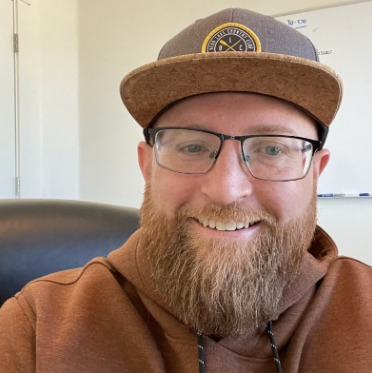
James Gilbert
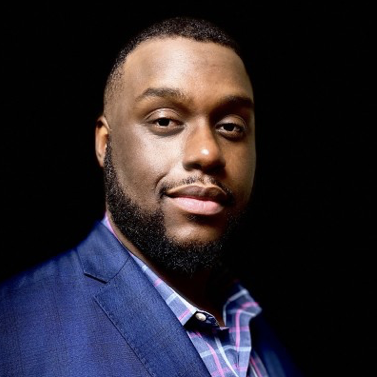
Vern Tremble
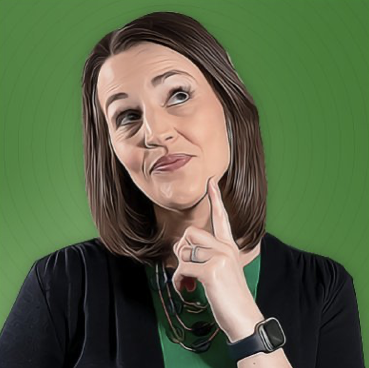
Stephanie Cox
